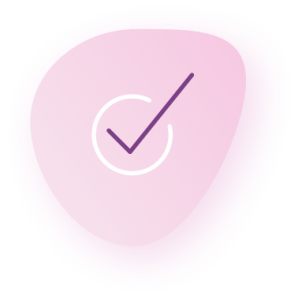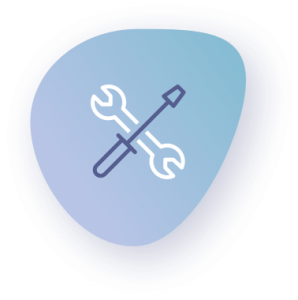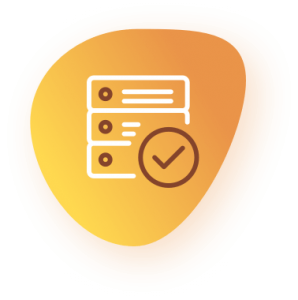Optimizing the customer journey is one of the best ways to ensure your sales funnel converts well and maintains a high ROI.
It also boosts customer satisfaction, increasing customer retention, loyalty, and overall brand affinity.
So, how exactly can you optimize the customer journey? Touchpoint mapping is a great place to start. Touchpoint mapping involves tracing and outlining all touchpoints or interactions a customer has with your brand.
Pinpointing those touchpoints helps you identify problematic areas to improve for an impressive customer experience. Although brands usually control most customer touchpoints, a few areas are beyond their control.
For example, you have limited control over how an existing customer could rate your brand on an independent platform like G2.
However, you can respond to and resolve issues raised on such platforms. That way, potential customers going through the reviews will know that your business truly cares about them.
So, let’s take a look at how you can use customer touchpoint mapping to optimize customer journey:
1. Identify the customer touchpoints
Touchpoint mapping starts by identifying all customer touchpoints. You must conduct thorough research to know where or how customers interact with your business.
Keep in mind that different customers have different journeys. For example, one customer may know about your brand from an ad while another may hear about you from a friend. Therefore, you must be thorough to ensure no touchpoint is overlooked.
Customer touchpoints can be categorized into three broad categories:
- Pre-purchase touchpoints – The pre-purchase touchpoints occur before a prospect converts into a customer. Before purchasing, consider the research customers do on platforms like Yelp, G2, and social media. Some prospects may go through directory listings and reach out to your customer reps.
- Purchase touchpoints – Purchase interactions happen when a prospective customer is in the process of buying from your business. These interactions typically take place on your website. For example, they could be on landing pages, product pages, checkout pages, etc. It can also be an in-person interaction if you have a brick-and-mortar store.
- Post-purchase touchpoints – Finally, you have the post-purchase interactions that take place when a customer has already bought something from your business. Too many brands make the mistake of ignoring these interactions. If you want a fully-optimized customer journey that boosts customer lifetime value and brand affinity, you must pay attention to the post-purchase touchpoints.
How exactly are you supposed to identify the touchpoints in your customers’ journeys? There are various ways to go about it. First, you could put yourself in the customer’s shoes. How and where would you interact with your brand if you were the customer? That should give you several touchpoints.
Second, you can create a customer persona using the data in your customer database. The buyer persona will help you understand your customers better, which will give you ideas of how or where they may interact with your business.
The third strategy is pretty straightforward: you can run a customer survey. Put the survey on your website and socials, or distribute it to your email subscribers. Ask the prospects or customers how they heard about your company and usually interact with your brand.
You can also include these questions in your onboarding process.
2. Map the customer interactions
The next step involves putting all the touchpoints identified in a logical sequence. You want to map the interactions so that you can see how someone could go from being a prospect to a loyal customer. The map usually has four steps as described below:
- Brand awareness – Prospects at his stage are learning about your brand’s existence. Therefore, the interactions could come through ads, social media marketing campaigns, blogging, SEO, content marketing, word of mouth, and other channels. If you are a crypto startup, you could also run a PR campaign to boost your brand awareness by promoting your business on crypto PR distribution platforms and attracting more people to your business.
- Consideration – Prospects at this stage want to know why they should consider your products. They may also be looking at comparisons between you and your competitors. Prospects at this stage are likely to go through customer reviews on Google My Business and third-party sites like Yelp, G2, etc. They may also visit your website, request product demos, and attend your company’s webinars.
- Purchasing – The prospects are now sold on your product. They’re hence visiting your product pages or brick-and-mortar stores. The interactions will occur in the checkout process or with the sales reps in your store.
- Repeat customers – This stage covers all customers returning to your business for more orders. Of course, you want as many customers as possible coming back. That means you need to deliver a great customer experience which touchpoint mapping will help you achieve. Moreover, you need to invest in customer loyalty programs, write valuable email sequences that educate customers, and create a solid social media strategy that boosts interactions.
You can also build a community for your customers by setting up a discord or social media group.
Customer journey maps will always vary based on various factors. For example, if you’re utilizing both offline and online advertising, your map will look different from a business using online ads alone.
It’s also possible to have more than one map within the business. Remember, different buyers can take different journeys. So, make sure to create all possible touchpoint maps, especially the most significant ones that lead to a purchase and repeat business.
3. Improve the touchpoints
After identifying and mapping all customer touchpoints, the next step is optimizing each interaction. Start from the top and look at how customers learn about your business.
Make sure the initial brand awareness stage creates a great first impression. You can do that by running personalized ad campaigns, for example. You can also respond to leads and customers on social media.
Replying to user reviews left on third-party platforms is also vital.
Investing in a good content marketing campaign is crucial too. You can use these campaigns to set yourself apart as a thought leader in your niche. This will earn you more respect from potential customers.
You may want to create a growth model if you decide to invest in content marketing. That can help you predict traffic growth, allowing you to prepare accordingly to deliver a smooth user experience.
Next, optimize the interactions happening in the purchase stage.
You can work on reducing waiting times or queues in your physical store, for example. Optimizing the checkout process is also imperative for online businesses. Ensure your pages load fast, provide a guest checkout option, and offer numerous payment and shipping options.
Finally, work on the post-purchase interactions. Start by providing excellent customer service.
Thank-you emails can also go a long way. Then, stay in touch with your customers on social media and through email. You can also use post-purchase email campaigns to bring more business. However, you should always prioritize delivering valuable emails and not just sales pitches.
Loyalty and referral programs are critical too. The best part is these programs can grow your business exponentially, regardless of its current size. Even some of the largest companies, such as Tesla, have used referral programs to encourage their customers to promote their brand.
4. Update the touchpoint map
Market dynamics change constantly, and so do customer preferences. Therefore, touchpoint mapping is not a one-off thing. It’s supposed to be a continuous process.
You must review your map regularly, making sure it’s relevant to your evolving customer expectations. Utilize customer feedback to identify new touchpoints worth adding to your maps. Similarly, you need to identify touchpoints that are no longer relevant to your brand.
Besides surveying current customers, you should also do market research. For example, you could look at the channels your competitors are investing in.
That might give an idea of new touchpoints that could benefit your business.
Conclusion
Customer experience is paramount to any brand’s success. The tricky part is you must optimize the entire journey because a mishap at any point ruins the entire customer experience. For example, it wouldn’t matter that your checkout process was efficient if the delivery or after-sale customer support was terrible.
Thankfully, touchpoint mapping helps you identify all interactions allowing you to optimize the entire customer journey. Plus, the steps are pretty straightforward.
One, identify all the touchpoints. Two map out the touchpoints to understand the customer journey clearly. Next, go through the map, optimizing each interaction.
Finally, review your map occasionally, making sure it stays relevant.
That’s it. Good Luck!












